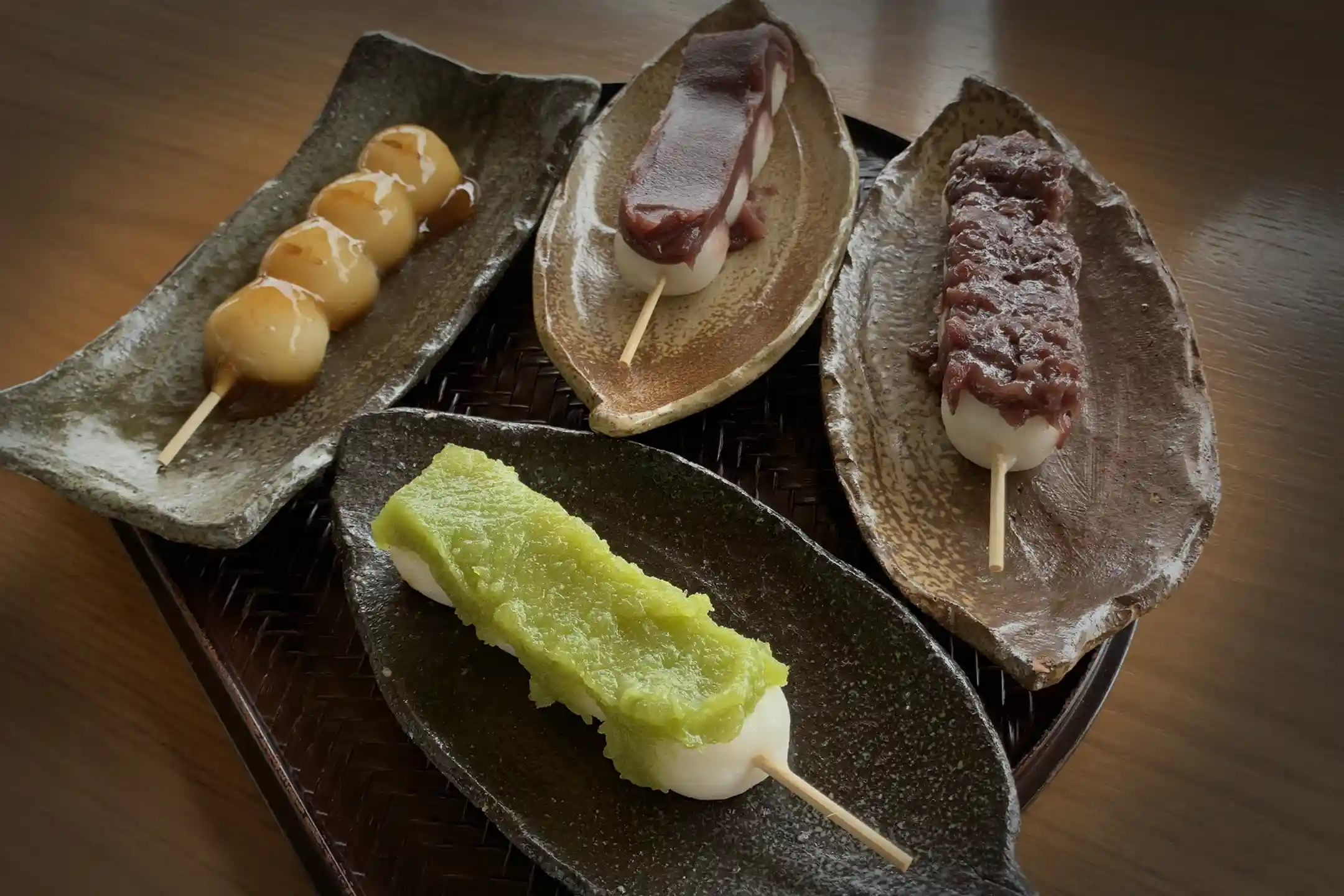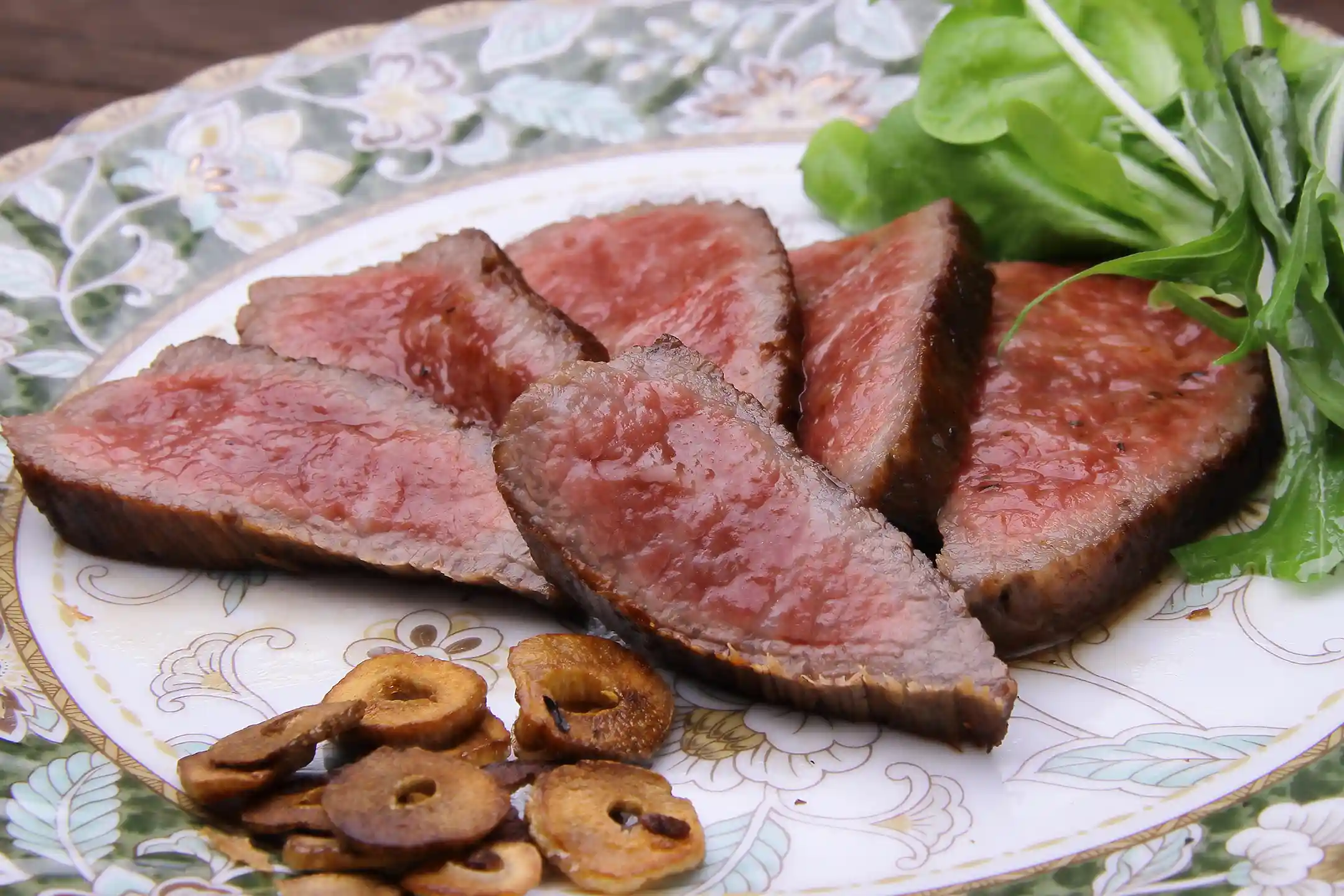Japanese dango may look like charming little rice balls, yet for centuries they have brightened everyday tables and seasonal festivals alike. Made with rice flour, they deliver a gently chewy texture and understated sweetness that feels worlds apart from the butter‑rich breads and pastries you might be used to—an instant invitation to expand your dessert vocabulary.
Once you hear their story, dango stop being a curiosity and become a delicious gateway into Japan’s history, spirituality, and everyday rhythms. In the pages ahead you’ll explore the aesthetics they embody, the festivals they enliven, the hands‑on wagashi classes you can join, and the serene cafés worth seeking out. Let these insights spark moments of fresh discovery on your next journey through Japan.
Basic Overview of Dango: Ingredients and Making Tips
Ingredients and Textural Traits
Put simply, dango are traditional wagashi made by kneading rice flour with water before the dough is boiled, steamed, or lightly grilled. If you come from a wheat‑centric food culture, you’ll instantly notice how rice‑based dough delivers a nostalgic chewiness revered in Japan.
Two main flours shape that bite: jōshinko, milled from non‑glutinous rice, and shiratamako, milled from glutinous rice. (*1) Choose jōshinko if you prefer a firmer, satisfying chew; pick shiratamako when you crave pillowy elasticity. For everyday cooking, many households simply reach for dangoko, a convenient blend that offers the best of both worlds. (*2)

The method is wonderfully straightforward, yet every little adjustment counts. Slowly add cool or lukewarm water, knead until smooth, roll the dough into bite‑size rounds, and cook them in gently bubbling water or a steamer. Skewer the dumplings, then lavish them with silky red‑bean paste, glossy sweet‑soy glaze, nutty kinako, or any seasonal topping you find—each accent draws out the dumplings’ subtle sweetness. (*3)
If you’re used to buttercream‑rich pastries, this quiet sweetness will surprise and delight you, stretching your personal definition of dessert. (*4)
How Dango Differ from Other Wagashi: Mochi and Daifuku
Mochi begins with steamed glutinous rice that’s pounded until it turns irresistibly stretchy and even a little tenacious. That clingy quality is seen as a symbol of prosperity, so you’ll find mochi in festive zōni soup and stacked as kagami‑mochi for New Year celebrations. (*5)
Dango, by comparison, start with flour rather than whole grains, so they stay compact and pleasantly soft without the extra stretch. Daifuku, meanwhile, tuck silky red‑bean paste inside a mochi blanket, keeping the sweetness hidden. (*6) Dango flaunt their toppings on the outside, a small distinction that proves just how many personalities a single ingredient—rice—can adopt.
For many visitors, discovering that rice can morph into dessert at all feels revelatory—and it perfectly captures the ingenuity at the heart of Japanese cuisine.
The History and Cultural Background of Dango
From Antiquity to the Present
Archaeological clues suggest that dango’s ancestors go as far back as the Jōmon era, when foragers shaped mashed nuts into round bites. By the refined Heian period, steamed flour confections had made their way to court banquets, and the term “dango” entered the written record. (*1, *2) Even amid lacquered trays and ornate rituals, people cherished these modest spheres for the cozy comfort they offered.
The Edo era democratized dango. As street stalls multiplied, skewer in hand became the must‑have accessory for cherry‑blossom picnics, spawning the cheeky saying “hana yori dango”—dumplings over flowers. (*3) Foreign travelers recorded the lively scenes, but what they witnessed was ordinary life, not staged spectacle—a reminder that Japanese culture often celebrates elegance through the everyday.
Dango’s Role in Festivals and Seasonal Events
You’ll meet dango again and again in Japan’s calendar of festivals. At the mid‑autumn moon‑viewing, stacks of snowy dango honor the full moon and the season’s bounty. (*4) When spring arrives, tri‑colored sanshoku dango—pink for blossoms, white for lingering snow, green for new leaves—turn hanami picnics into palettes you can eat.
Travel north to Tōhoku at New Year’s and you’ll see branches dotted with colorful dango called dangosashi, hung indoors to beckon good harvests and robust health. (*5) Each orb evokes the moon, the sun, or the very kernel of life, revealing a worldview that folds big ideas into small, edible icons.
A Spectrum of Regional Dango
Because Japan spans so many latitudes and traditions, dango morph from region to region, sometimes subtly, sometimes dramatically. (*1) As you travel, watch how the flavors—and even the names—shift to reflect local pride. Here are three favorites that reward a delicious detour.
Kyoto’s Hanami Dango: Refined Traditional Beauty
Local lore says the very first three‑color hanami dango brightened Hideyoshi Toyotomi’s lavish 1598 cherry‑blossom viewing at Daigo‑ji. (*2) True or not, Kyoto still paints spring in gentle stripes of pink, white, and green, letting you savor the season through sight and taste alike. (*3) Pair a skewer with matcha in a centuries‑old teahouse and you’ll understand Kyoto’s refined rhythm.
Tokyo’s Mitarashi Dango: A Blend of Urban Food Culture
Mitarashi dango likely began in Kyoto, but shrewd Edo merchants streamlined the skewer to four balls—one for each mon coin. (*4, *5) Stroll through modern Tokyo and you’ll spot them everywhere, from heritage sweet shops to 24‑hour convenience stores, proof that great flavor thrives at every price point.

Nagoya’s Kinako Dango: Deep Flavor in Simplicity
Head to Nagoya and you’ll encounter kinako dango—char‑kissed dumplings buried under a generous dusting of roasted‑soybean flour. (*6) The beige exterior belies an earthy aroma and mellow sweetness that feels like a friendly hug, ideal for travelers seeking comfort over flash.
Dango as an Expression of Japanese Artistry and Aesthetics
Colors and Shapes That Celebrate the Seasons
Tiny as they are, dango act like miniature canvases for the seasons: petal‑pink in April, harvest‑moon white in September. Each festival inspires a new design, reflecting a cultural instinct to see, savor, and let go. (*1, *2)
If you anticipate the sugary punch of Western confections, dango might whisper rather than shout. Tune in to that quietness and you’ll taste the Japanese love of subtle change—an edible lesson in seasonal aesthetics.
Links to Wabi‑Sabi and the Aesthetics of the Seasons
The same wabi‑sabi spirit that guides the tea ceremony lives in each dumpling. By honoring the fleeting moment—blossoms today, crimson leaves tomorrow—people gladly dress up their daily sweets, treating impermanence as an art form.
Once you grasp this mindset, the humble dumpling turns into a poetic object, and the question “Why fuss over something so small?” dissolves into quiet appreciation.

Experiencing Dango Culture and Refined Dango Cafés in Kyoto and Tokyo
Enjoying Culture Through Hands‑On Dango Experiences
Great as it is to taste wagashi, rolling up your sleeves unveils an extra layer of delight. Crafting nerikiri sweets—tiny edible sculptures of seasonal flowers and landscapes—lets you witness artisanal precision up close. (*1)
In Kyoto, Shichijō Kanshundo, a sweet shop founded over 150 years ago, welcomes visitors to learn side by side with veteran artisans. (*2, *3) As you knead and shape each piece, you’ll feel Japan’s monozukuri—“making things with heart”—come alive. Enjoying your handiwork with frothy matcha teaches you that flavor is only part of the story.
Tokyo’s nostalgic Asakusa district offers similar classes, complete with wood‑handled molds and time‑honored techniques. Many visitors leave exclaiming, “Now I finally know what that mysterious shape signifies!” Nearby museums deepen the intrigue with displays ranging from Nara‑period treats to exquisite showpieces of modern confectionery art. (*4*5*6)
Dango Cafés Offering Quality and Calm
When it’s time to sit back, Kyoto’s narrow lanes lead you to machiya cafés where tatami floors, courtyard gardens, and discreet art objects frame every bite. Kagizen Yoshifusa in Gion has been serving elegant sweets since the Edo era, proving that history can taste wonderfully fresh. (*7, *8)
Tokyo counters with chic salons that remix tradition. HIGASHIYA GINZA, for instance, sets wagashi on tiered trays that echo afternoon tea, making the experience instantly approachable if you love European pâtisserie rituals. (*9) Here, dango and nerikiri double as contemporary edible art.
Sample dango in both cities and you’ll see how one humble sweet can wear entirely different faces—an effortless way to stitch tradition and innovation into a single, delicious travel story.

Conclusion: The Intellectual and Cultural Richness Dango Offer
Kneading rice flour into bite‑sized rounds may sound straightforward, yet that basic act has bloomed into dazzling diversity across centuries of history, belief, and deep respect for nature’s cycle.
You might still find it remarkable that rice transforms into dessert, or that a whisper‑sweet dumpling can speak volumes about the seasons. But as you weave dango into your travels—observing the rituals, joining a workshop, or lingering in a calm tea room—you’ll discover layers of meaning well beyond “just a snack.”
Let every skewer remind you that Japan excels at folding big ideas into small forms. Pause for a moment before your next bite, and you’ll taste not only sweetness but also centuries of seasonal wisdom—proof that travel’s greatest joys often fit in the palm of your hand.
Author Bio





.webp)
.webp)